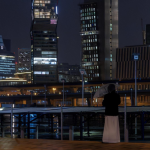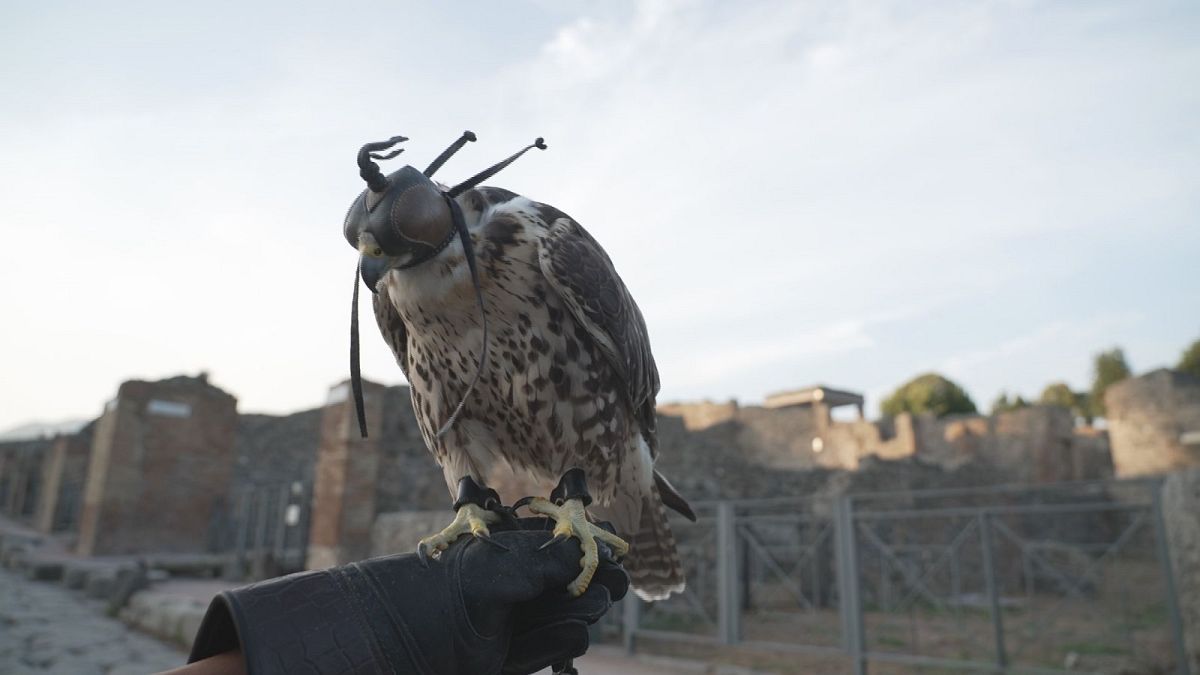Pompeii, the ancient Roman city buried under volcanic ash and pumice following the eruption of Mount Vesuvius in AD 79, is one of the most important archaeological sites in the world. However, in recent years, the site has faced a new threat – pesky pigeons. These birds have been causing damage to the fragile ruins with their corrosive guano, threatening the preservation of the historic site. In order to address this issue, the Archaeological Park of Pompeii has enlisted the help of ten birds of prey to protect the site from these feathered intruders.
Gianna and Arya are two of the ten birds of prey that have been patrolling the archaeological park of Pompeii at least three times a week for the past two years. These majestic birds, including falcons and hawks, have proven to be highly effective in driving away pigeons and other birds that pose a risk to the ancient ruins. The closure of the park during the COVID lockdown in 2020 led to an increase in the number of pigeons nesting on the site, further highlighting the need for a solution to protect the archaeological excavations.
The Archaeological Park of Pompeii’s decision to use birds of prey as a sustainable and eco-friendly method of pest control is part of a larger effort to implement an ecological approach to protecting the fragile heritage site. By harnessing the natural instincts and hunting abilities of these birds, the park has been able to effectively deter pigeons and other birds from causing damage to the historic ruins. This innovative solution not only helps to preserve the integrity of the site, but also minimizes the need for harmful chemicals or other methods of pest control that could potentially harm the environment.
The use of birds of prey to protect Pompeii is a prime example of how ancient methods can be successfully adapted to address modern challenges. Falcons and hawks have been used for centuries as effective hunters, and their presence in the archaeological park serves as a natural deterrent to unwanted pests. By working in harmony with nature and leveraging the instincts of these birds, the park has found a sustainable and humane solution to protect the ancient ruins. This eco-friendly approach also aligns with the growing trend towards conservation and sustainability in the preservation of cultural heritage sites.
In addition to their role in protecting Pompeii from pigeons, the birds of prey also serve as ambassadors for conservation efforts at the archaeological park. Visitors to the site have the opportunity to witness these majestic creatures in action, further raising awareness about the importance of preserving ancient heritage sites. Through educational programs and public demonstrations, the park is able to engage with the community and promote environmental stewardship. By highlighting the symbiotic relationship between humans and nature, the park is able to inspire a new generation of conservationists and ensure the long-term preservation of Pompeii for future generations to enjoy.
In conclusion, the use of birds of prey to protect the Roman ruins of Pompeii from pesky pigeons is a creative and effective solution that highlights the importance of ecological conservation in safeguarding our cultural heritage. Gianna, Arya, and their fellow birds of prey have proven to be invaluable allies in the ongoing battle to preserve this iconic archaeological site. By adopting a sustainable and eco-friendly approach to pest control, the Archaeological Park of Pompeii is setting a positive example for how ancient methods can be adapted to address modern challenges. Through their efforts, these majestic birds not only help to protect the historic ruins, but also inspire a deeper appreciation for the natural world and the importance of conservation.










